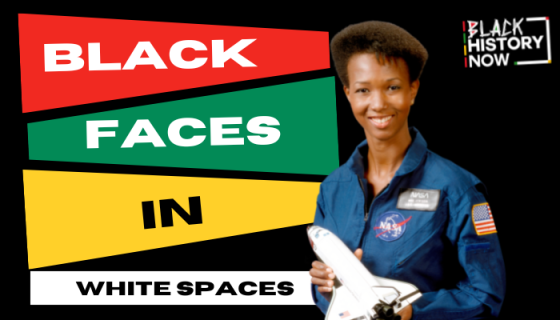Source: General / General
Black History NOW Celebrates the paths paved by those who broke the mold in areas of film, sports, science, art and business. The heroes of today stand on the shoulders of giants, looking ahead and creating even more opportunities for African-Americans to thrive in spaces that were historically denied to our people.
Today, we celebrate those who dared to think Beyond The Stars: Dreamers who refused to let society – or our cosmos – limit their desire to face the final frontier.
Take a look at a few of our heroes in the gallery below.
As a doctor, engineer, and NASA astronaut, Mae Jemison has always reached for the stars. In 1992, Jemison became the first African American woman to travel in space.
She has also written several books and appeared on many television programs including an episode of Star Trek: The Next Generation. In addition to her many awards, Jemison has been inducted into the National Women’s Hall of Fame and the International Space Hall of Fame.
Born in New York City on October 5, 1958, Tyson discovered his love for the stars at an early age. When he was nine, he took a trip to the Hayden Planetarium at the Museum of Natural History where he got his first taste of star-gazing. Tyson later took classes at the Planetarium and got his own telescope. As a teenager, he would watch the skies from the roof of his apartment building.
After studying at Harvard University, he earned his doctorate from Columbia University in 1991. Tyson went to work for the Hayden Planetarium in 1996 before becoming its director. Additionally, he has served as host of NOVA ScienceNow and the StarTalk Radio podcast. Tyson remains a popular TV science expert today.
NASA space scientist, and mathematician, Katherine Johnson‘s alculations of orbital mechanics as a NASA employee were critical to the success of the first and subsequent U.S. crewed spaceflights.
During her 33-year career at NASA and its predecessor, she earned a reputation for mastering complex manual calculations and helped pioneer the use of computers to perform the tasks. The space agency noted her “historical role as one of the first African-American women to work as a NASA scientist.”
From 1792 through 1797 Benjamin Banneker, an African American mathematician and amateur astronomer, calculated ephemerides (tables of the locations of stars and planets) for almanacs that were widely distributed and influential.
Because of these works, Banneker became one of the most famous African Americans in early U.S. history.
An Urban One Brand
Copyright © 2023 Interactive One, LLC. All Rights Reserved.
Powered by WordPress VIP
An Urban One Brand
Copyright © 2023 Interactive One, LLC. All Rights Reserved.
Powered by WordPress VIP

